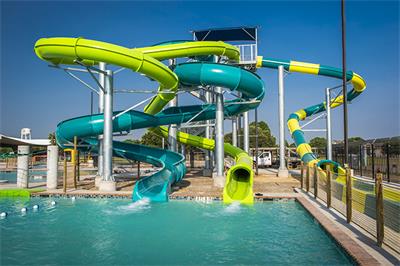Prospects of water park design and management Planning
The rapid rise of water parks in China has significantly filled the gap in the water-playing market. However, many poorly managed water parks within the same industry have had to close their doors prematurely. To secure a longer foothold in the water park industry, many operators have begun to develop innovative ideas in the water park design and management and operation.

Currently, a significant portion of the parks in the market adopt a combination of regional culture or the introduction of foreign culture to create theme parks. The management of these theme parks is designed around a specific cultural subject, with amusement and viewing items as the main attractions, serving as a place for relaxation and entertainment. The themes are clear, and the characteristics are distinctive, creating a mimicry landscape that leaves visitors with lasting memories. The United States’ Disneyland pioneered this concept, influencing the development of theme parks worldwide. Shenzhen Splendid China, established in 1989, created a small theme park that showcases China’s scenic spots and traditional features, marking the birth of theme parks in China and becoming a successful case. In central cities where modernisation has progressed, people are beginning to tire of the hustle and bustle of urban life. To reconnect with nature and relieve stress, there is a growing trend towards embracing natural environments. Consequently, ecological parks themed around nature have emerged, allowing weary individuals to experience the vastness of the original ecology while integrating leisure and entertainment projects that harmonise with nature. This approach fosters a unity between people and nature, enabling individuals to alleviate their stress through the beautiful natural surroundings while enjoying themselves.
1. Shaping a historical and cultural theme. For instance, the Qingming Shanghe Garden is a large-scale Song Dynasty folk custom amusement park based on the famous painting “Qingming Shanghe Tu” by Zhang Zeduan. This park generated over 3 million yuan in ticket revenue within just two months of opening.
2. Introducing foreign cultural themes. A notable example is the water park in Chongqing, Caribbean Sea World, which opened on June 10, 2009, themed around Caribbean culture, setting a precedent for water theme parks in China. Under this thematic atmosphere, thrilling large-scale water games, such as slope slides, provide new experiences for visitors.
3. Performance planning a theme, such as the large-scale performance “Impression” set against the stunning landscape of Guilin’s Lijiang River, directed by Zhang Yimou. This project, which took three and a half years to complete, combines the Li River’s scenery with Guangxi’s ethnic minority culture and showcases the talents of elite Chinese artists. It represents the country’s first new concept landscape performance. Water park design and management employs strategies like this to attract a diverse range of tourists, enhance the visibility of their amusement brand, and add value to their park management. Furthermore, the four-dimensional integration of food, lodging, transportation, and travel within the park aims to provide tourists with comprehensive services and convenience, which is also a significant strategy for effective park management.
4. Radiating the market to expand business areas. Some large group companies, while operating parks, have begun to diversify their market reach into other business areas. This strategy of diversification is a major trend in both international and domestic park management. Diversified management allows enterprises to maximise the categories and varieties of products or services, engaging in cross-industry operations to expand their production scope and market resources, thereby improving operational efficiency and ensuring long-term survival and growth.
Some typical cases in China illustrate how park development can drive the popularity of surrounding markets and lead to involvement in the real estate sector. The establishment of amusement parks in specific areas has created a significant scale of tourism resources, activating the surrounding market and transforming it into a region with development potential. Thus, developing real estate in these areas becomes a strategic choice. As the surrounding areas gain popularity, the growth of catering and hotel businesses follows suit, radiating outward from the park’s centre. Additionally, tourism consulting agencies, including travel agencies, can be nurtured. By expanding their business areas, enterprises enhance their market competitiveness, reduce risks associated with single-industry reliance, and maintain market vitality. The renowned OCT Group Corporation has successfully developed tourism alongside real estate ventures, including OCT Real Estate, OCT Hotels, and various well-known brands such as Happy Valley and Portofino.
5. Creating a reasonable park management model based on regional circumstances. The key to effective park management lies in its popularity and the ability to attract local tourists as well as visitors from afar. In addition to establishing engaging themes, it is essential to formulate business strategies tailored to local conditions during daily operations, aiming to attract tourists with potential spending power.
Related Post:
Prospects of water park design and management planning
Key points of water park planning and design
Analysis on the importance of water park planning and design
Principles of water park design
